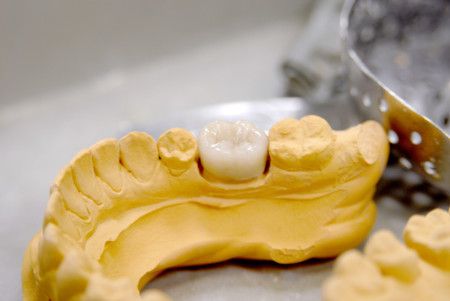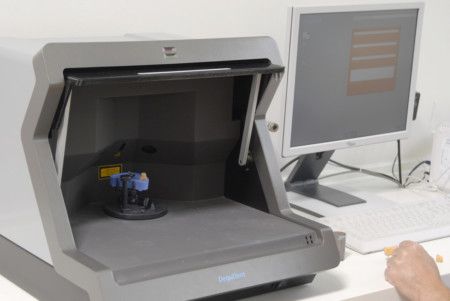3D printing – dentures from the computer?
More and more dental medical devices are likely to be computer designed and 3D printed in the future. Keyword dental prosthesis: What is possible today? What the future holds?
3D printing is a so-called additive manufacturing technique. In many industries such as z.B. It is already established in the aerospace and automotive industries. Dentistry also uses this manufacturing process. Additive means: a printer uses digital data to apply and/or combine materials layer by layer until it has produced a three-dimensional object.
The dentist or. Dental technician has previously designed the product to be manufactured using special software. Dental and dental technical expertise are therefore essential, despite computer manufacturing (CAD/CAM technology, computer aided design/computer aided manufacturing).
strength of additive processes is that three-dimensional objects, z.B. compared to ablative processes, can be produced in significantly more complex forms. As another advantage compared to ablative manufacturing, z.B. milling an object out of a block of material, they also produce hardly any waste products.
Possibilities and limitations of 3D printing
“In dentistry, the so-called laser-sintering process now makes it possible to additively fabricate frameworks for crowns, bridges and even denture bases from metal,” explains PD. Dr. med. dent. Jan-Frederik Güth, Senior Physician at the Polyclinic for Dental Prosthetics at the Ludwig Maximilian University of Munich. From these, the dental technician produces the finished denture with precise manual work in further work steps.
“With the exception of laser-sintered metal dentures, there is no scientific data or long-term experience to date on 3D printing processes for dentures that can remain in the mouth permanently. This technology can be used not only for temporaries but also for occlusal splints and work preparation services such as e.B. jaw models, surgical templates or impression trays are implemented. They support the daily work considerably”, says Güth.
In orthodontics in particular, the orthodontist or dentist can use special software to construct the individual steps to the ideal tooth position on the computer. For each step, it produces a jaw model using 3D printing, which serves as the basis for the production of tooth-correction splints. This simplifies planning and the process compared to the conventional procedure.

What could be possible in the future with 3D printing?
Researchers at Ludwig Maximilian University in Munich are testing a possible future application of 3D printing in dentistry. They are investigating the extent to which 3D-printed layered multicolor crowns and bridges can be used as models to test the dentures in the patient’s mouth for function and esthetics. There is a similar approach for the trial of total prosthesis.
On the basis of the temporary denture from the printer, which is tried in and test-fitted in the patient’s mouth, the dentist and dental technician receive concrete information for the fabrication of the definitive denture. “We are still at the beginning here. But the potential is huge – and our scientific work today forms the basis for the 3D-printed dental prostheses of tomorrow,” says Güth.
Initiative proDente e.V. – Facts
proDente informs about healthy and beautiful teeth. The contents are scientifically tested by experts. proDente works for journalists, offers brochures and posts online. Photos and films supplement the information. Dentists, dental technicians, manufacturers and retailers have been involved in the proDente e initiative since 1998. V.


